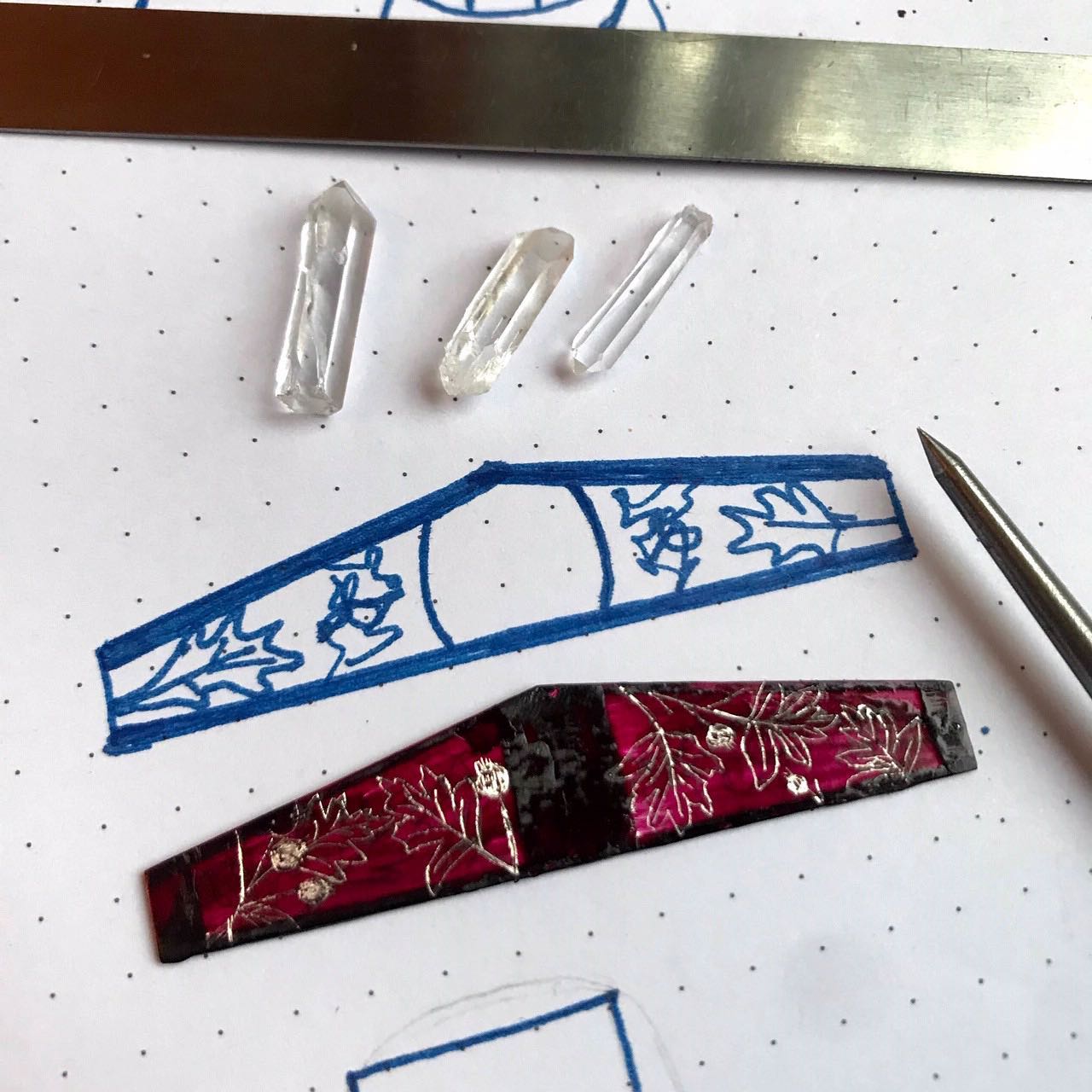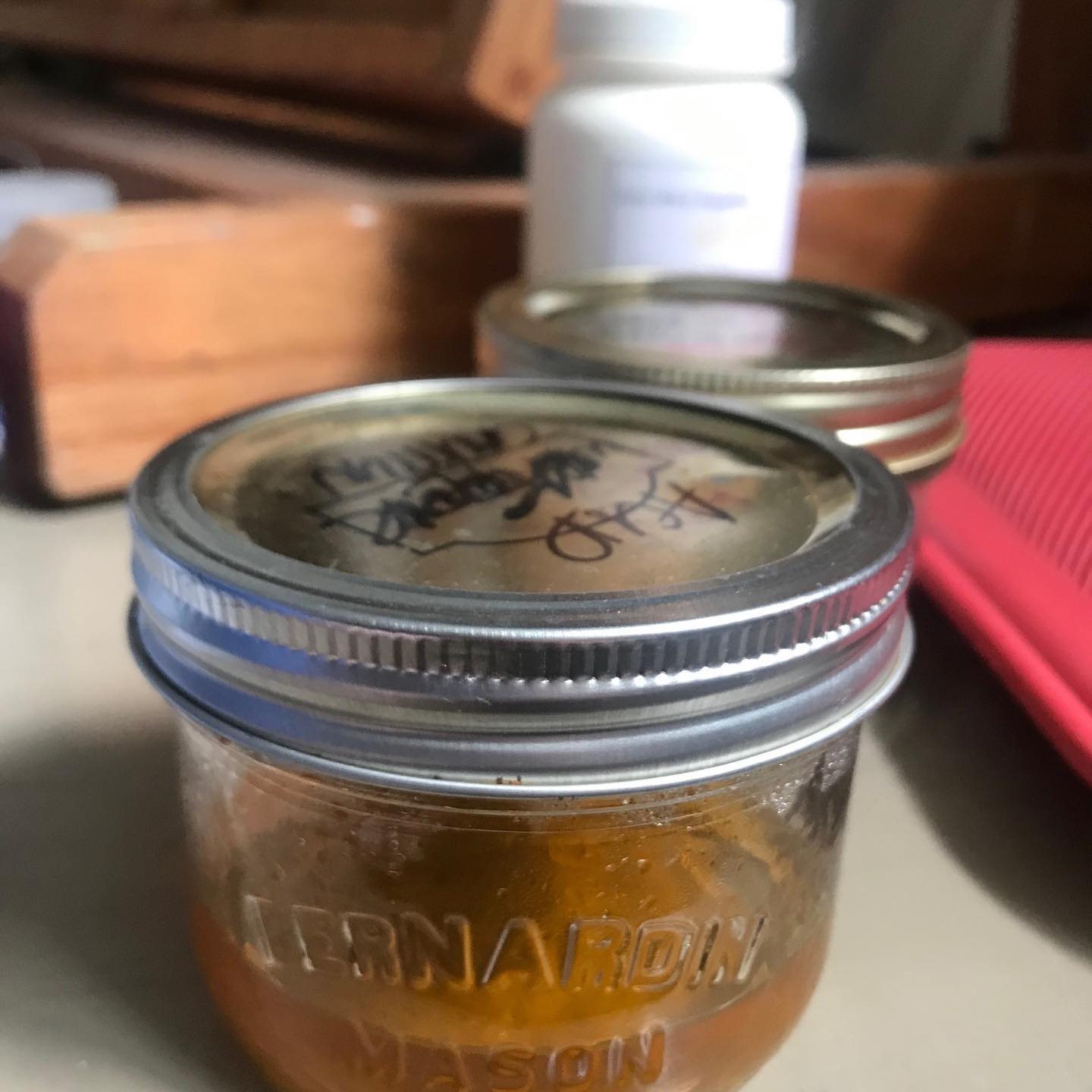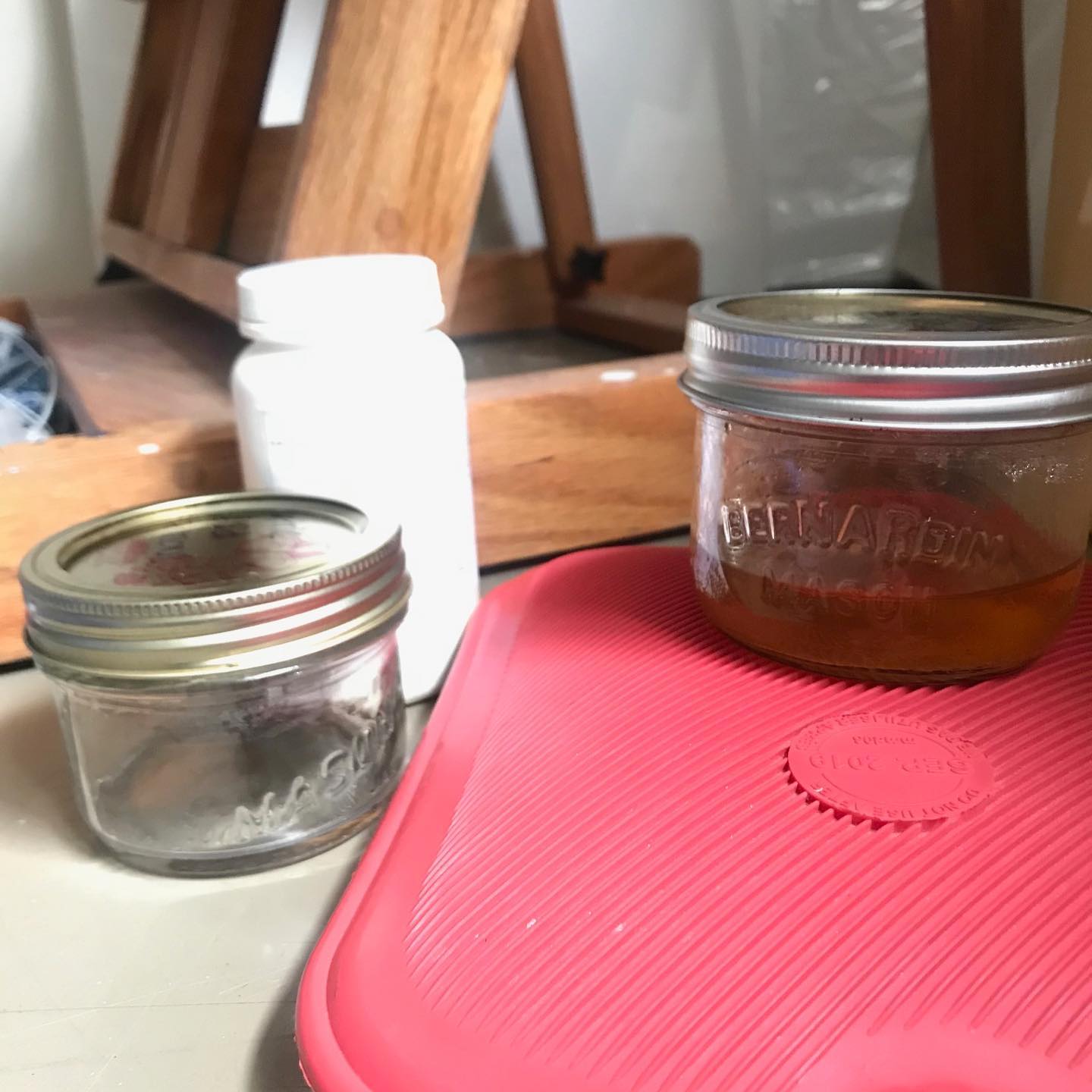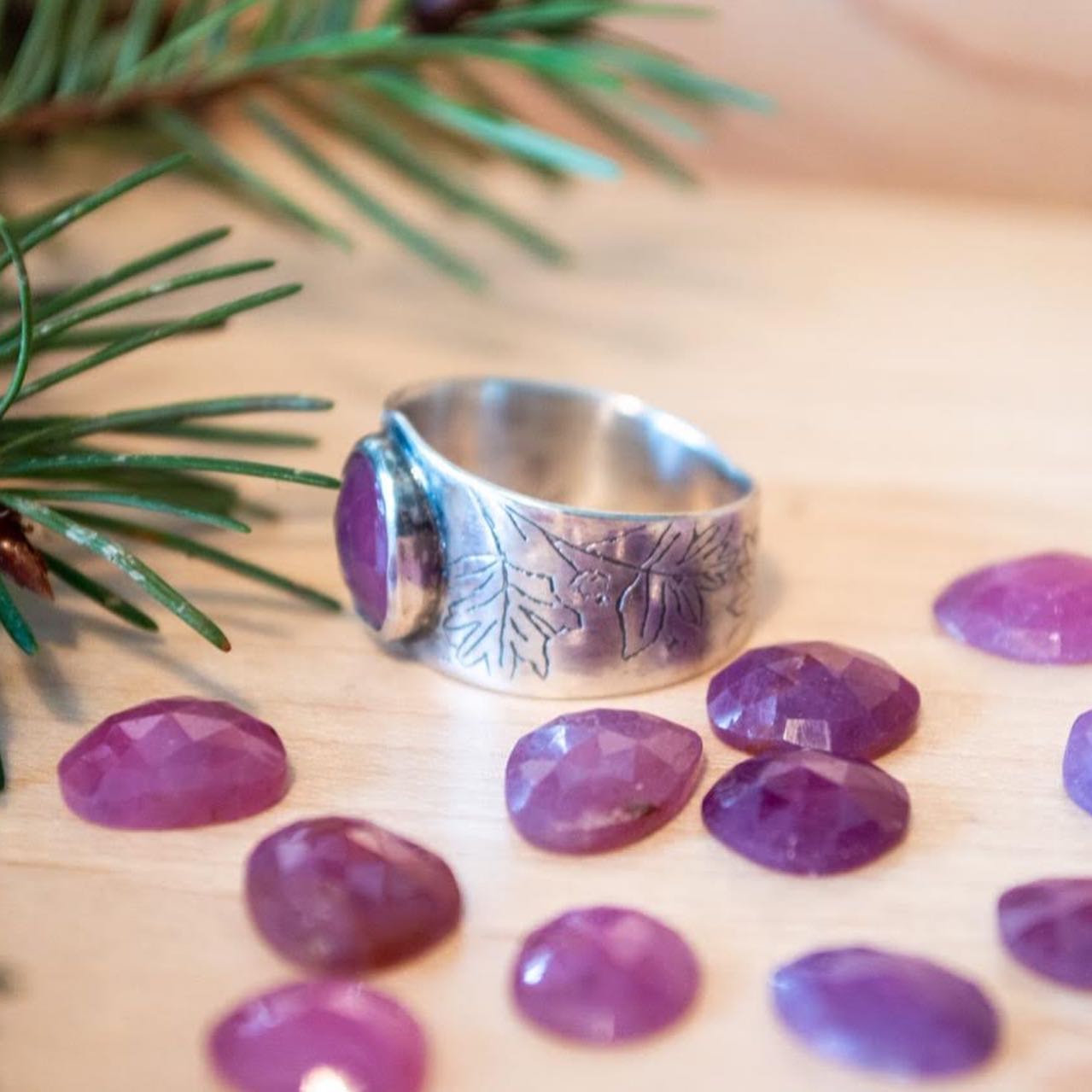



Here is some great information on etching from @beltanebotanicals - “I have been etching for a long time. I am trained in large scale copper plate etching/printmaking and now I primarily etch on a small scale for jewellery.
The tools I use are:
2 glass mason jars
A hot plate (optional but it is faster with one)
Nitrile gloves
Eye protection
Nail polish or paint pens
sharpie
Scribe
Plastic tweezers
Packing tape
Pen
Ferric nitrate
Feather
1. I prep the silver and paint a thin layer of nail polish or use paint pens.
2. I transfer my design by drawing it on paper, colour the back with pencil, and then transfer it by using a pen. Other times I free hand it with a scribe. Use the scribe to remove the area that you want to etch (you can cover up mistakes with a sharpie). Make sure you also use a sharpie or nail polish to paint the sides of the metal as well.
3. I attach it to packing tape and then attach a plastic twist tie so I can dip it.
4. I create the etching mixture. Wear nitrile gloves and eye protection to create the mixture. One part ferric nitrate to 2-4 parts water. I put it in a mason jar.
5. I do mine without heat which takes several hours. You can also use a hot plate, ensure proper ventilation if using a hot plate.
6. I put the silver in and seal it the lid.
7. Wearing nitirle gloves and eye protection. I take it out every 30 mins dip it in the second mason jar with water, and use a feather to brush off the silver to remove any etched residue. This ensures an even etch.
8. I put it back in the acid and continue checking until I am happy with the deepness of the etch.
9. When I am done I rinse it off and use nail polish remover to remove the polish.
Note: If you get ferric nitrate or the mixture on your skin or eyes, rinse thoroughly. 15 minutes flush eyes or rinse skin. Refer to SDS sheet for more information.”
Thank you so much for this! I know many members of our community are curious about etching! We appreciate you taking the time to share!